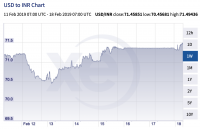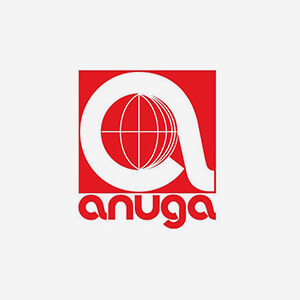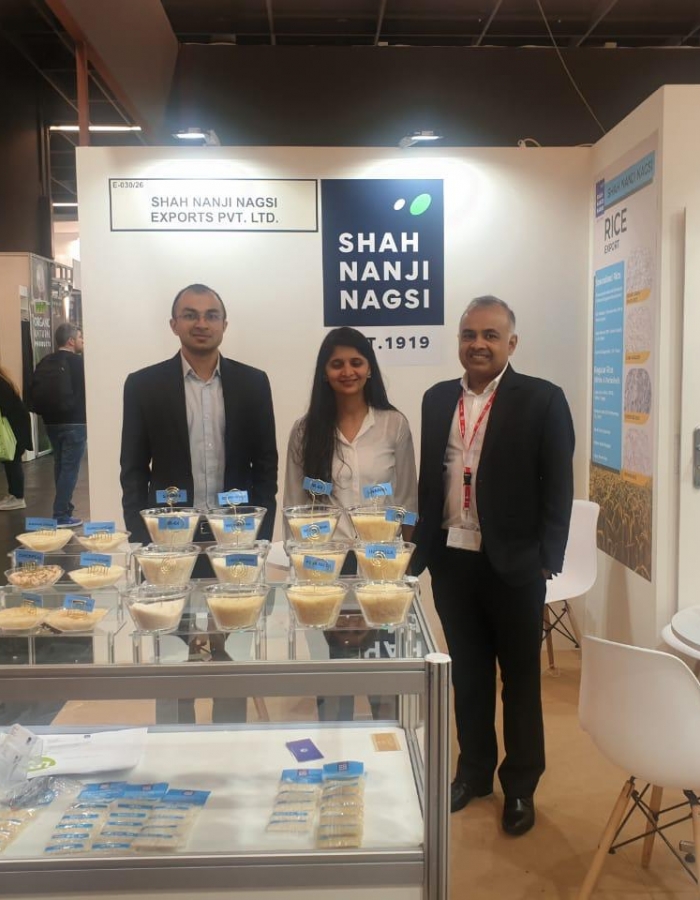Every other year, the company has a booth at the biannual Anuga trade show hosted in Cologne, Germany. This year it was held from 9th to 13th October. This show is more focused on European and American food processors.
Author: Shahnn
Factors affecting rice exporters of India this week
Currency, break bulk shipments, government procurement and MEIS are the key factors affecting rice exporters of India this week.
1. Currency:
The Indian currency appreciated against the U.S. Dollar from 22 – 27 March by around 0.56%. This increased the costs for the rice exporters of India earlier during the week.
2. Break bulk shipments:
Four vessels were being loaded with a total of 136,250 MTS by rice exporters of India from Kakinada Port during this time, which is significantly less than the earlier month.

3. Crop Outlook: Rabi crop (new crop in summer) is excellent this year. In southern states it will start arriving by the 3rd week of April and in Central and Western India by the 1st week of May. This could push prices further down, possibly presenting a favourable situation for the rice exporters of India.
4. Market outlook: Paddy tender by the Chhattisgarh state government has been cancelled. Without the 5% MEIS benefit, rice exports from India have practically come to a standstill. Millers and exporters of India are watching how much lower prices can go before demand matches the supply. The rice exporters of India are hoping that the government will resume the MEIS benefit, but it may not be implemented before the general election results are announced in the end of May.

Overall: Indian rice market sentiment was bearish as demand remained slow. The rice exporters of India expect demand to pick up once domestic prices fall down further when the new crop arrives next month.
More information: For more information on the markets or any other information, please email us at marketing@shahnn.com.
Disclaimer: This information is gathered from various sources, including some unverified sources. While we try to make it as correct as possible, we are unable to guarantee it’s authenticity.
Factors affecting rice exporters in India this week
Currency, breakbulk shipments, government procurement and MEIS are the key factors affecting rice exporters in India this week.
1. Currency:
The Indian currency strengthened against the Dollar earlier this week but later depreciated, ending the week at around 1% weaker. This increased the costs for the rice exporters in India earlier during the week.
2. Breakbulk shipments:
Five break bulk vessels in Kakinada port are being stuffed at the moment. They are to carry a total of 193,000 MT of rice. Rice exporters in India are shipping the majority of this quantity to West African ports. For breakbulk vessels, a large quantity of rice is to be purchased within a short span of time. This has increased the demand of rice at this time. However, overall demand from West Africa is still not very high, perhaps due to the upcoming elections in Nigeria, as the Nigerian government may restrict imports during elections to support local farmers.
3. Government procurement:
January 31, 2019, was the last day for the Indian government to purchase paddy. In Chhattisgarh state, procurement of paddy this year has been in record quantities. It is estimated that last year the government procured around 3.5 million MT of paddy while this year the estimate is of around 9 million MT. So far this has kept prices high for the rice exporters in India.
However, the government is now facing a shortage of warehousing space for storing paddy, so it has asked rice millers to store paddy and deliver rice at a later day. Because of the shortage in warehousing space, the government is also postponing deliveries from farmers, which is causing farmers to sell in the open market. This has improved the availability of paddy in the open market. In turn, this has helped bring down the spot prices of rice being sold by the millers to the rice exporters in India.
Crop outlook: Major states which grow the Rabi crop of paddy (sown in winter and harvested in spring) are facing unfavourable weather and a water shortage. It seems that the area under sowing so far this year is around 16% lower than the area under sowing in the same period of last year. But this bullish factor doesn’t seem to have a significant influence on the spot prices at which the rice exporters in India purchase paddy/rice. However, even though the sowing has reduced and the weather is unfavourable, the traders and millers are still optimistic about the crop yield.
5% MEIS: MEIS is a kind of subsidy provided by the Indian Government to the rice exporters in India. It is in the form of a license which will be worth approximately 5% of FOB value. Rice must be shipped before March 25, 2019, to avail the 5% MEIS benefit. There may be an increase in rice exports just before the deadline, which might cause volatility in March. This could also put pressure on inland logistics and container availability in March. There is also a possibility that the MEIS benefit might be extended but firm news on this is expected only at the last minute.
Overall: The Indian currency is relatively stable while the supply and demand factors facing the rice exporters in India are bearish. So overall the market is expected to be stable, but there might be some volatility in March due to the MEIS deadline.
More information: For more information on the markets or any other information, please email us at marketing@shahnn.com.
Disclaimer: This information is gathered from various sources, including some unverified sources. While we try to make it as correct as possible, we are unable to guarantee it’s authenticity.





